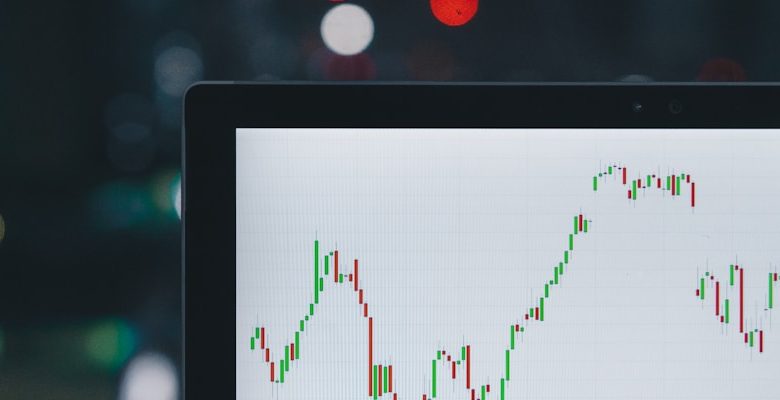How to Transition from Short-Term Trading to Secure Long-Term Investing

- Understanding the Difference between Short-Term Trading and Long-Term Investing
- Creating a Solid Investment Strategy for Long-Term Success
- The Importance of Patience and Discipline in Long-Term Investing
- Identifying Stable and Profitable Investment Opportunities for the Long Run
- Mitigating Risks and Building a Diversified Portfolio for Long-Term Growth
- Tools and Resources to Help You Make the Transition from Short-Term Trading to Long-Term Investing
Understanding the Difference between Short-Term Trading and Long-Term Investing
Understanding the difference between short-term trading and long-term investing is crucial when making the transition from one to the other. Short-term trading involves buying and selling securities within a short period, usually days or weeks, to capitalize on short-term price fluctuations. On the other hand, long-term investing involves holding onto assets for an extended period, typically years, with the goal of building wealth over time.
Short-term trading is more speculative and requires active monitoring of the market, while long-term investing is more passive and focuses on the fundamentals of the assets being held. Short-term trading is often driven by technical analysis and market trends, while long-term investing relies on fundamental analysis and the potential for growth over time.
When transitioning from short-term trading to long-term investing, it is essential to shift your mindset from seeking quick profits to focusing on long-term goals and staying patient during market fluctuations. It is also important to diversify your portfolio and invest in assets with strong fundamentals and growth potential to secure long-term financial stability.
Creating a Solid Investment Strategy for Long-Term Success
When transitioning from short-term trading to long-term investing, it is crucial to develop a solid investment strategy to ensure success over time. Here are some key steps to consider:
- 1. Set clear financial goals: Define your long-term objectives and establish a timeline for achieving them. This will help guide your investment decisions and keep you focused on your ultimate financial aspirations.
- 2. Diversify your portfolio: Spread your investments across different asset classes to minimize risk and maximize returns. A well-diversified portfolio can help protect against market volatility and economic downturns.
- 3. Conduct thorough research: Before making any investment, conduct extensive research on the companies or assets you are considering. Look at their financial performance, track record, and future growth potential to make informed decisions.
- 4. Stay informed: Keep up to date with market trends, economic indicators, and global events that may impact your investments. Being informed will help you make timely adjustments to your portfolio as needed.
- 5. Monitor your investments: Regularly review your portfolio to assess performance and make any necessary changes. Rebalance your investments periodically to ensure they align with your long-term goals and risk tolerance.
By following these steps and staying disciplined in your approach, you can create a solid investment strategy that will set you up for long-term success. Remember, investing is a marathon, not a sprint, so patience and consistency are key to achieving your financial goals.
The Importance of Patience and Discipline in Long-Term Investing
Patience and discipline are crucial aspects of successful long-term investing. It is essential to understand that long-term investing is not a get-rich-quick scheme but rather a gradual process that requires time and commitment. By exercising patience, investors can ride out market fluctuations and allow their investments to grow over time.
Discipline plays a significant role in long-term investing as well. It involves sticking to a well-thought-out investment strategy and not getting swayed by short-term market trends or emotions. By maintaining discipline, investors can avoid making impulsive decisions that could harm their long-term financial goals.
When transitioning from short-term trading to long-term investing, it is essential to cultivate these qualities. While short-term trading often involves quick profits and losses, long-term investing requires a different mindset. By focusing on the big picture and staying patient and disciplined, investors can set themselves up for success in the long run.
Identifying Stable and Profitable Investment Opportunities for the Long Run
When transitioning from short-term trading to long-term investing, it is crucial to identify stable and profitable investment opportunities that will stand the test of time. One key strategy is to focus on companies with a proven track record of consistent growth and a strong competitive advantage in their industry. These companies are more likely to weather market fluctuations and deliver sustainable returns over the long run.
Another important factor to consider is the valuation of potential investments. Look for companies that are trading at a reasonable price relative to their earnings, assets, and growth prospects. Avoid overvalued stocks that may be subject to sharp corrections in the future.
Diversification is also essential when building a long-term investment portfolio. By spreading your investments across different asset classes, industries, and geographies, you can reduce risk and improve the overall stability of your portfolio. This approach can help protect your investments from unexpected market events and ensure consistent returns over time.
Furthermore, conducting thorough research and due diligence on potential investment opportunities is critical. Take the time to analyze the financial health, management team, competitive positioning, and growth prospects of each company before making a decision. By being diligent and patient in your investment approach, you can increase the likelihood of selecting stable and profitable investments for the long term.
In conclusion, transitioning from short-term trading to long-term investing requires a shift in mindset and strategy. By focusing on stable and profitable investment opportunities, maintaining a diversified portfolio, and conducting thorough research, you can position yourself for success in the long run. Remember that patience and discipline are key virtues in long-term investing, and it is important to stay focused on your long-term goals despite short-term market fluctuations.
Mitigating Risks and Building a Diversified Portfolio for Long-Term Growth
When transitioning from short-term trading to long-term investing, it is crucial to mitigate risks and build a diversified portfolio for sustainable growth over time. Diversification is key to spreading your investments across different asset classes, industries, and geographic regions to reduce the impact of any single investment underperforming.
One way to mitigate risks is to allocate your assets strategically based on your risk tolerance, investment goals, and time horizon. By diversifying your portfolio, you can potentially minimize the impact of market fluctuations and economic downturns on your overall investment performance.
Another important aspect of building a diversified portfolio is to periodically review and rebalance your investments to ensure they align with your long-term objectives. This involves selling overperforming assets and reinvesting the proceeds into underperforming ones to maintain your desired asset allocation.
Moreover, consider including a mix of stocks, bonds, real estate, and other alternative investments in your portfolio to further enhance diversification. By spreading your investments across different asset classes, you can potentially reduce risk and improve your chances of achieving long-term growth.
Overall, by mitigating risks and building a diversified portfolio, you can set yourself up for long-term success as an investor. Remember to stay informed about market trends, economic indicators, and global events that may impact your investments to make informed decisions and adapt your portfolio accordingly.
Tools and Resources to Help You Make the Transition from Short-Term Trading to Long-Term Investing
Transitioning from short-term trading to long-term investing can be a daunting task, but having the right tools and resources at your disposal can make the process much smoother. Here are some key resources that can help you make the shift successfully:
1. **Educational Materials**: Investing in books, online courses, and workshops can provide you with the knowledge and skills needed to become a successful long-term investor. Learning about fundamental analysis, portfolio diversification, and risk management is essential for making informed investment decisions.
2. **Financial Planning Tools**: Utilizing financial planning tools such as retirement calculators, investment calculators, and budgeting apps can help you set realistic financial goals and track your progress over time. These tools can also help you create a personalized investment strategy based on your risk tolerance and financial objectives.
3. **Robo-Advisors**: Robo-advisors are automated investment platforms that use algorithms to create and manage a diversified investment portfolio for you. These platforms offer low fees and personalized investment recommendations based on your financial goals and risk profile.
4. **Long-Term Investment Platforms**: Platforms like mutual funds, index funds, and exchange-traded funds (ETFs) are ideal for long-term investors looking to build a diversified portfolio. These investment vehicles offer exposure to a wide range of assets, reducing individual stock risk and providing long-term growth potential.
5. **Financial Advisors**: Working with a financial advisor can provide you with personalized financial advice tailored to your individual needs and goals. An advisor can help you create a comprehensive financial plan, navigate complex investment decisions, and stay on track to meet your long-term financial objectives.
By leveraging these tools and resources, you can make a successful transition from short-term trading to long-term investing and secure your financial future for the long term. Remember that investing is a marathon, not a sprint, and patience and discipline are key to achieving your long-term financial goals.



